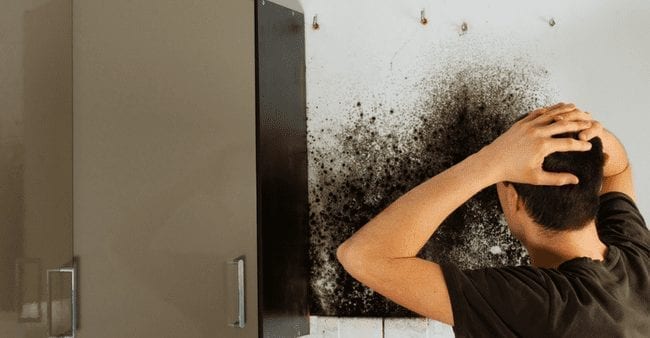Nearly everybody may have their own unique opinion involving Leaking water lines.

Early discovery of dripping water lines can minimize a prospective calamity. Some little water leakages may not be noticeable.
1. Check Out the Water Meter
Every house has a water meter. Inspecting it is a guaranteed manner in which aids you uncover leakages. For beginners, switch off all the water sources. Ensure no one will flush, make use of the tap, shower, run the cleaning maker or dish washer. From there, most likely to the meter as well as watch if it will alter. Considering that nobody is using it, there must be no activities. That shows a fast-moving leakage if it relocates. If you discover no changes, wait an hour or two as well as examine back once more. This indicates you might have a slow leak that might also be underground.
2. Check Water Usage
If you identify unexpected changes, despite your intake being the same, it suggests that you have leakages in your plumbing system. An unexpected spike in your expense shows a fast-moving leak.
Meanwhile, a steady rise on a monthly basis, even with the exact same behaviors, shows you have a slow leakage that's additionally gradually escalating. Call a plumber to thoroughly inspect your home, especially if you really feel a warm area on your flooring with piping underneath.
3. Do a Food Coloring Examination
30% comes from toilets when it comes to water usage. Examination to see if they are running effectively. Decline flecks of food shade in the storage tank as well as wait 10 minutes. If the color somehow infiltrates your dish throughout that time without flushing, there's a leak in between the storage tank as well as bowl.
4. Asses Exterior Lines
Do not neglect to examine your outdoor water lines too. Examination faucets by affixing a yard hose pipe. Should water leak out of the link, you have a loosened rubber gasket. Change this and guarantee all connections are limited. It will assist obtain it properly analyzed and maintained every year if you've got a sprinkler system. One small leakage can throw away tons of water and also surge your water expense.
5. Evaluate and also Examine the Circumstance
Property owners should make it a behavior to inspect under the sink counters and also also inside cupboards for any bad odor or mold and mildew growth. These two warnings show a leak so prompt focus is needed. Doing routine evaluations, also bi-annually, can conserve you from a major issue.
Examine for stainings as well as weakening as most home appliances as well as pipes have a life span. If you suspect leaking water lines in your plumbing system, don't wait for it to escalate.
Early detection of leaking water lines can reduce a prospective catastrophe. Some small water leaks may not be visible. Inspecting it is a guaranteed means that assists you find leakages. One small leakage can lose loads of water and spike your water bill.
If you presume dripping water lines in your plumbing system, don't wait for it to escalate.
How to Know If Your Home Has a Hidden Leak
Water Meter Reveals Inexplicable Water Usage
If you’d like to test whether or not there’s a leak somewhere in your home, you can do this using your water meter. Here is how to conduct the test:
Don’t use any water in your home for at least 30 minutes; this also means not turning on faucets or water-using appliances.
Go outside, and check your water meter for activity.
If your water meter shows that there was activity, even though no one was using any water, this proves that there is a leak in your home.Visible Mold or Mildew Growth
Leaks behind walls create moist, dark environments that allow mold and mildew to grow and thrive. Eventually, you might see mold growth forming on the wall closest to a hidden leak.
If mold is growing in an area that receives a high amount of moisture, such as a bathroom, it may simply be an indication that better ventilation is needed. However, if you see mold growth on a wall or the ceiling in an area where you would not expect, you probably have a hidden leak.
Musty, Mildew Odor
Sometimes you might not be able to see the mold or mildew that is growing as a result of a leak. However, the smell can give the problem away just as easily. If you catch a whiff of something musty, there’s a good chance that old water is collecting somewhere in your home that you can’t see.
Stained/Warped Walls, Ceilings, or Floors
When your home soaks up water, a variety of red flags can become visible, including ceiling stains, bubbling drywall, warped walls, and sagging floors. While these issues can be caused by excess humidity, they can also be signs that a pipe or plumbing connection has started leaking behind your walls.
Inexplicably High Water Bill
After a while, you get a general sense for what your water bill should be. If you own a pool or sprinkler system, your bill will tend to be higher during summer. However, if you receive a water bill that seems especially high, and you can’t figure out what caused it, then you may have a hidden leak somewhere that’s increasing your bill.
https://www.plumbingjoint.com/blog/2019/july/how-to-know-if-your-home-has-a-hidden-leak/

I ran across that blog posting on Leaking water lines when doing a search on the internet. Enjoyed reading our entry? Please share it. Let others find it. We appreciate reading our article about Locating water leaks.
Fast response, call now!